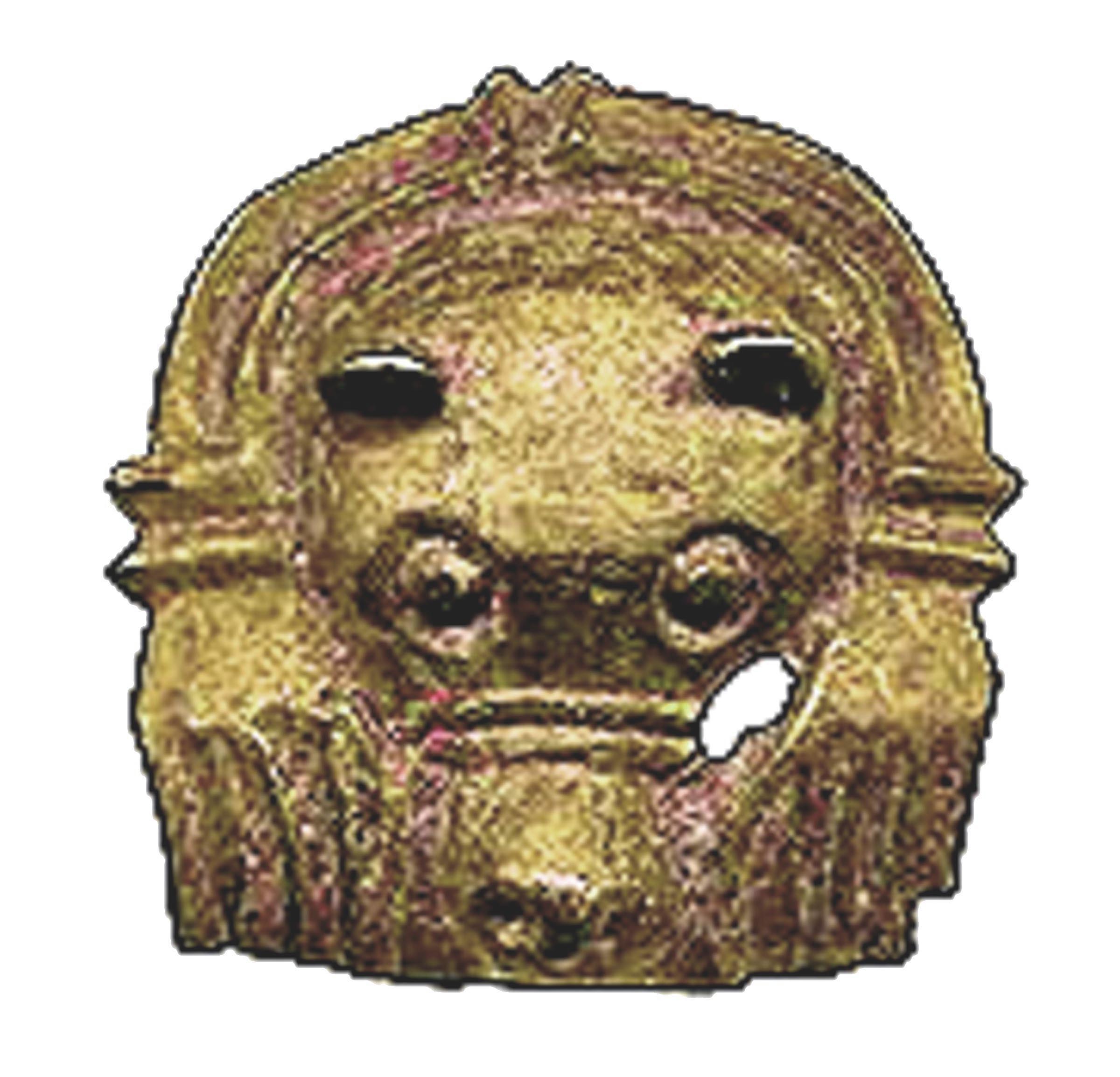

THE EASTERN KHANTY
Nearly 30,000 persons self-identified as Khanty in the 2010 census making them one of the most numerous minority indigenous peoples of the north, as the Russian government categorizes native peoples. Khanty groups are distinguished by their region of residence and by dialectical differences, which are so great as to amount to almost separate languages.
The eastern Khanty live mostly in Surgut and Nizhnevartovsk districts of Khanty-Mansi AO-Iugra with a few in the Nefteyugansk district and altogether number no more than 5000. Few of them are urbanized, especially in Surgut and Nizhnevartovsk districts, choosing instead to live in their widely scattered extended family settlements along the banks of the major tributaries of the great Ob: on the north side, the Pim, Lyamin, Tromegan and Agan Rivers, and on the south side, the Salym, Bolshoi and Malyi Yugan Rivers. A small number live on the upper reaches of the Vakh River. Some few others along the upper Demyanka and Vas-Yugan Rivers in Tyumen Oblast. Their traditional family hunting territories are protected by family gods who are considered offspring of lineage-founding deities. They believe that sacred power has been historically invested in both the landscape and the lineage. These gods are said to live in specific sacred places, and often have shrines marking these sites. The gods are worshipped through blood sacrifice (yir) of animals, especially reindeer, and through bloodless sacrifice (pory) of boiled meat.
Until the 1990s, most families lived a subsistence economy of fishing, hunting and trapping. There are significant differences, however. On the north side of the Ob, eastern Khanty, like their northern Khanty counterparts, also engage in small scale reindeer herding. Only on the south side of the middle Ob’ and along its easternmost tributaries, such as the Bolshoi Yugan River, does the pure fishing-hunting economy remain. You can learn more about the Yugan Khanty community at this external website. Ob-Ugrian social organization is based on extended families or patrilineages, with related lineages grouped into clans. Despite the efforts of Christian churches and the suppression of native religion under the Soviets, traditional belief and ritual still flourish. Prayer and sacrifice insured long life, tranquility, fertility, prosperity, and protection from and healing of disease and injury. The eastern Khanty are rapidly being overwhelmed by petroleum exploitation, which has polluted the land and rivers, making hunting and fishing difficult. It has commodified traditional family lands by making them leasable to petroleum companies, and the cash and luxury products made available this way have disrupted the traditional economy and had a negative effect on eastern Khanty traditions. By 2010 most of the elder generation who had survived World War II and carried forward both the subsistence economy and traditional beliefs and practices had passed away.1
UNIQUE FEATURES OF THE EASTERN KHANTY BEAR CEREMONY
Ob-Ugrians live in the middle world of a three zone cosmos, between an upper, sky world and an underworld. Each of these is further divided into seven levels. The high god, Numi Torum, is not to be approached directly but only through addressing one or more of his seven sons and seven daughters and their children. Because the patrons of the major tributary river systems are also lineage-founding deities, different clans claim traditional use rights to different river systems tributary to the Ob’.
As the Mansi consider the Bear one of the daughters of Numi-Torum, the Khanty consider the Bear one of his sons. The Bear is the patron of the Bolshoi Yugan River, where his major shrine is located; one of his other names is Yaoun Iki, Yugan Elder, and one of the prominent clans is the Bear Clan. The Yugan basin is heavily forested, and there are many bears. Bear festivals, known in eastern Khanty language as pupi kot (“bear’s house”) or pupi yek (“bear dances”) are not performed after the killing of every bear. The decision of whether to sponsor a bear festival falls to the hunter. Prior to the recent renewal of the Yugan tradition, the most recent Bear Ceremonies celebrated on the Bolshoi Yugan were in 1995 and before that in 1988, by two renowned singers. Both of them appear in this video clip below of the opening of the 1995 ceremony, and one sings a unique variant of the song of the “Coming of the Bear”. A trilingual—Khanty, Russian, English-- translation of that song is available here.
SONG OF THE COMING OF THE BEAR
Sung by N. P. Kuplandeyev, Larlomkiny, Bolshoi Yugan River, 1995, Photo credit Timofei Moldanov
By 2007, the Yugan Khanty, a community of more than 800 people, were without a tradition bearer who could even serve as a teacher. A grant from UNESCO's Moscow office made possible in 2010 the first performance of the Khanty Bear Ceremony in 15 years among the Yugan Khanty, by bringing to the Yugan community two eastern Khanty singers of Bear songs from the adjacent Tromegan River region. A second Bear Festival was performed according to local traditions in 2016, with invited Khanty guests from the Demyanka River where the tradition was hanging on by a thread. Elements from these two performances have been edited to produce the Eastern Khanty Bear Festival video on this page. Important contributions to this description and to translating eastern Khanty songs were made by NSF team member, Elena Surlomkina, a native speaker, and daughter of Petr Kurlomkin, one of the last Bear Festival singers among the Yugan Khanty.
The structure of the Eastern Khanty Bear Festival differs significantly from the Northern Khanty and Mansi Bear festival. The bear is brought in through the back window, which substitutes for smoke hole opening to heaven, which is no longer part of Siberian indigenous architecture. A special house for the bear is built on a platform with walls of wood strips, gridded 4x4 for a female bear, 5x5, for a male bear. A special counting stick is made in which notches are cut for each song, story or skit that is performed before the bear. The singers wear no special costume, hats or gloves, but put on women’s kaftans and shawls to disguise their identity. Singing predominates much more than skits or dancing, though both have their place. Singers do not sing in a group or link with their little fingers their swinging hands. Most noticeable is the absence of the “Sacred Night” and the visitation of local deities, so prominent in the Northern Khanty and Mansi, yet familiar personages like the Horned Owl, the Crane and the Raven, are present. Divination is also present, but more commonly in the form of table-raising or porridge divination, although divination by shooting the arrow into the wall was documented among the eastern Khanty on Agan River in the 1988 reconstruction filmed by Lennart Meri. On the Yugan, at the end of the festival, a path of white cloth is laid leading the bear out of the house, where it is placed on the snow facing southwards and the sun. Male guests are invited to a special feast of the bear’s cooked head and paws in the evening. The Eastern Khanty Bear festival seems a clear type of Sending-Home ceremony.
REGIONAL VARIANTS OF OB-UGRIAN BEAR FESTIVAL
Follow the links below to see film and photos that illustrate how the bear festival as practiced today by different peoples in western Siberia.
Northern Mansi Bear Festival
Northern Khanty Bear Festival
1Wiget, A. and O. Balalaeva, 2011. Khanty, People of the Taiga: Surviving the Twentieth Century. Fairbanks: U of Alaska P, 2011.
End of Waking the Bear: Understanding Circumpolar Bear Ceremonialism.

